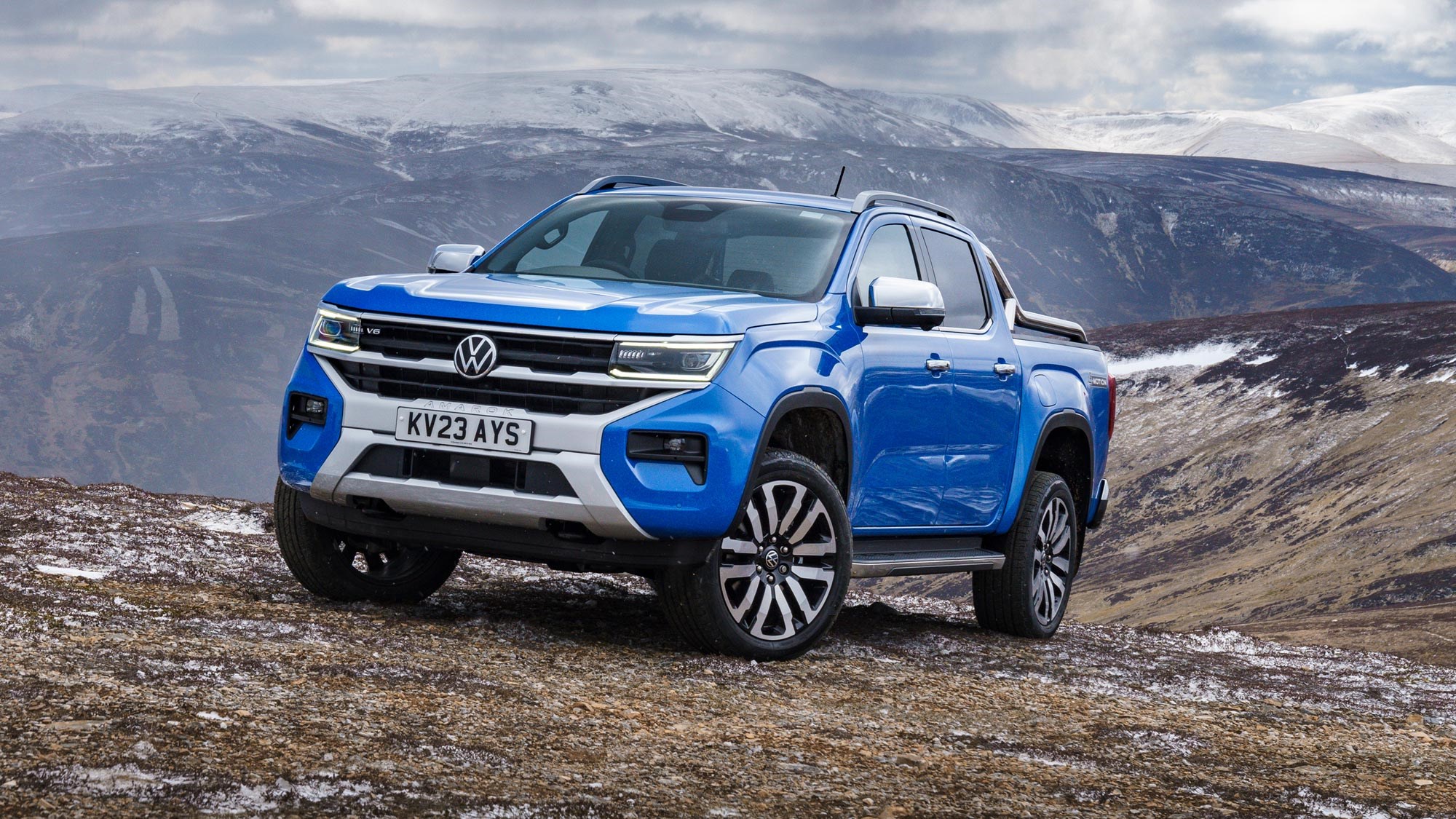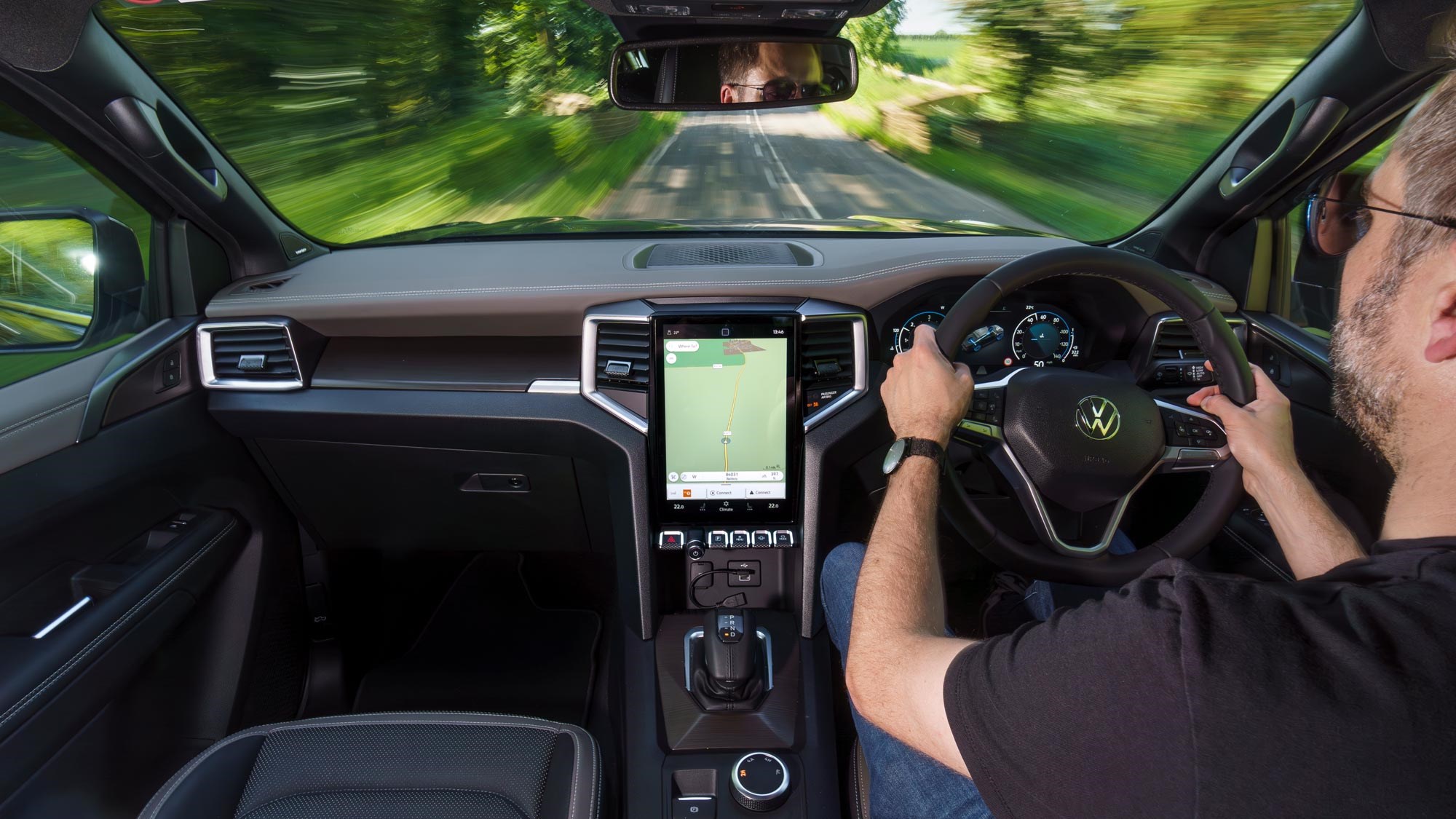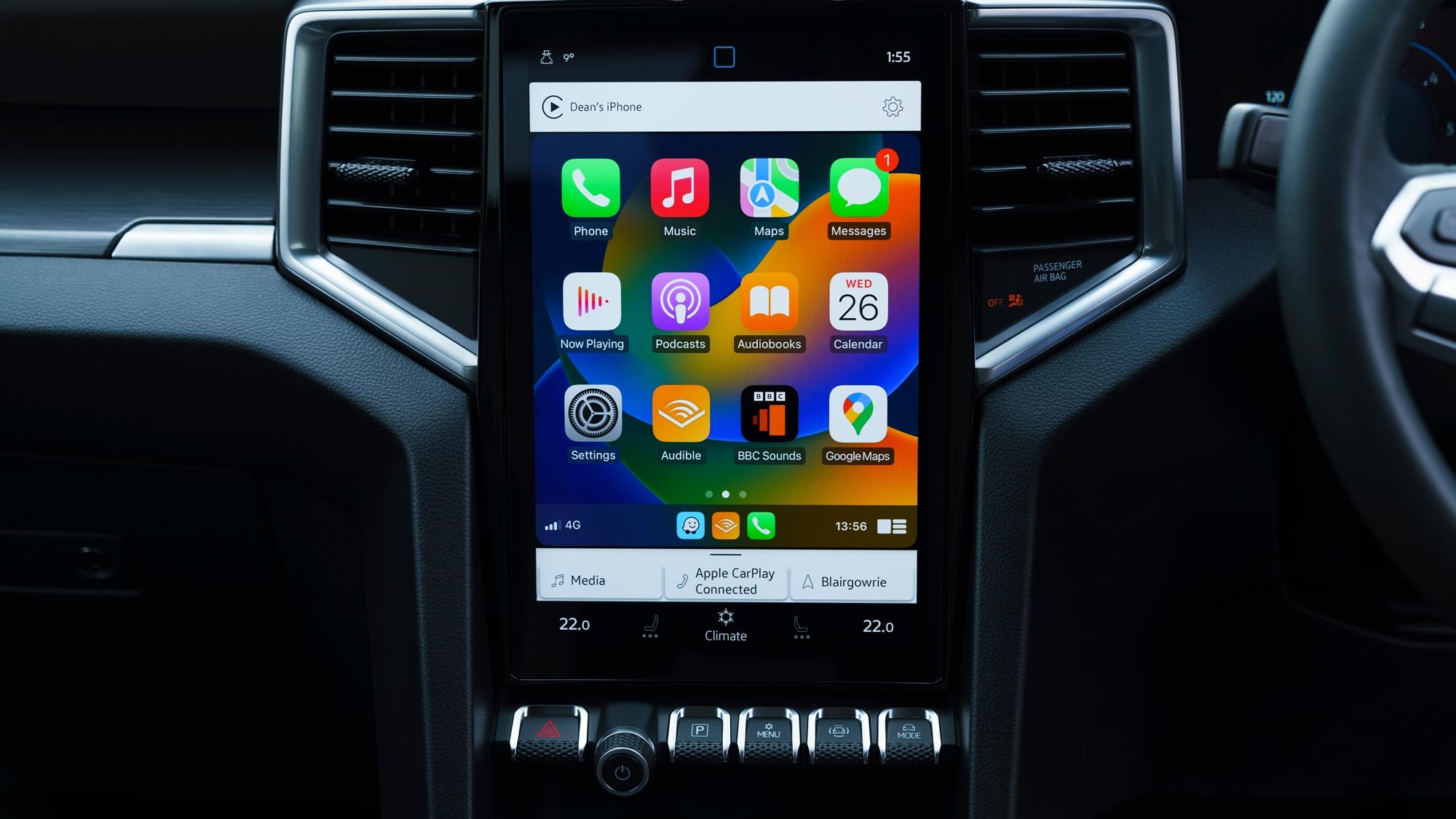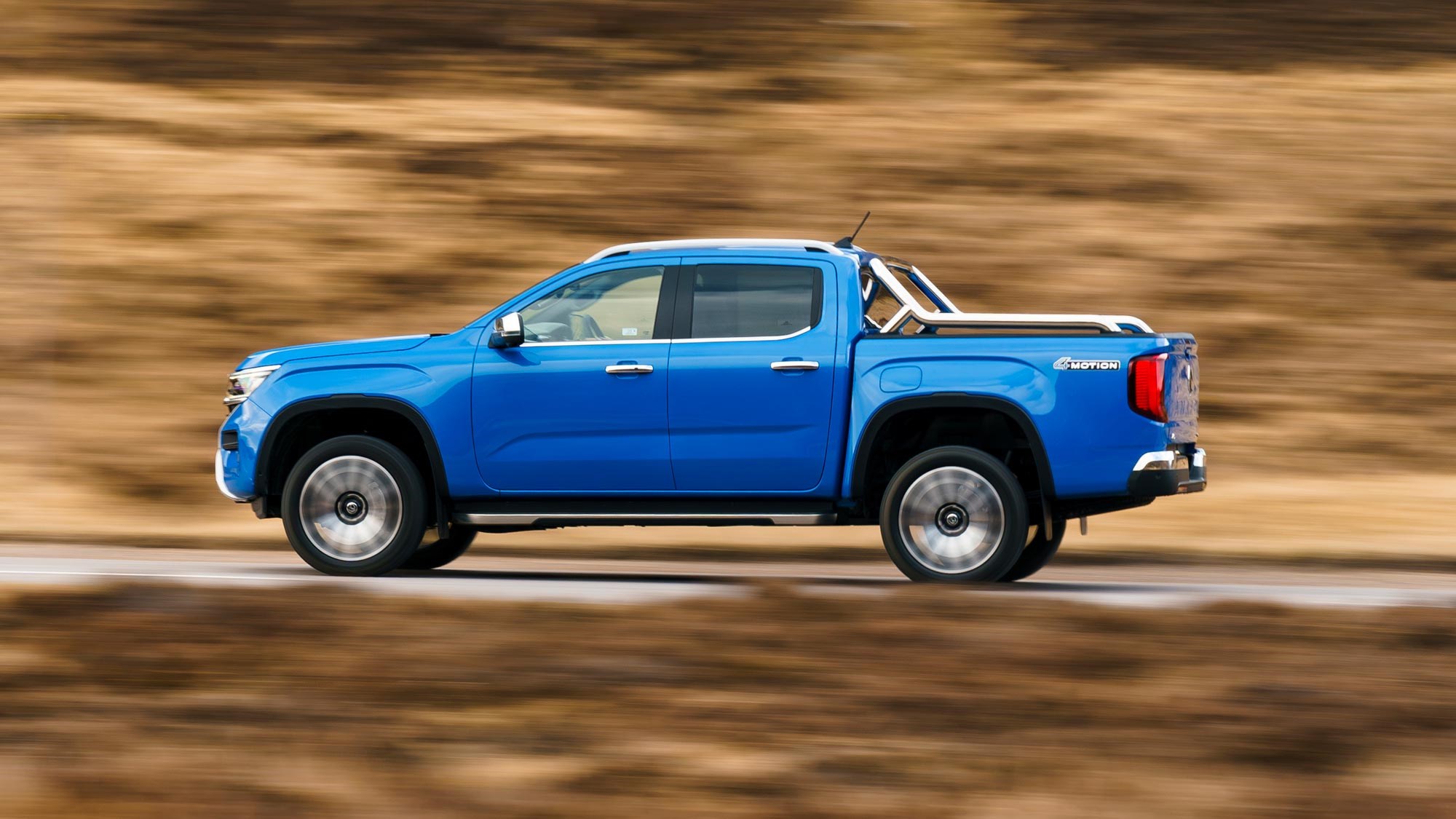► All-new version of Volkswagen’s posh pickup
► Two diesel engines, including a V6, and four trims
► Top trim doesn’t qualify for crucial tax breaks
There was a gap between the last version of Volkswagen Amarok to this all-new model, which meant that pickup buyers had a notably reduced set of options to choose from for a while.
The return of the Amarok is a welcome thing therefore, but don’t think that this automatically means you have the same wide range of options on the menu as before. The Amarok is the one of the first products of VW’s partnership with Ford, which will see the two companies share responsibility for the development of several commercial vehicles.
This means that the latest Volkswagen Amarok is essentially a Ford Ranger when you dig deep. And it really is a Ranger, as Ford was the lead partner in this project, which means that factors such as engines, gearboxes and the like are ones that are shared with the likes of the Transit van.
So is the 2023 VW Amarok just a rebadged Ford Ranger then?
The Amarok is a big deal to VW – it sold more than 800,000 of the first generation, so just slapping its badge onto a rival truck would be a silly approach, and thankfully there is much more to define the Ford and the VW from one another. There is only so much you can do with the three-box design of a pickup truck but put the Amarok and the Ranger next to each other and you’ll be able to tell the difference. Remove the respective branding and you would be able to identify which is which, too.
VW designers have been keen to retain what makes the Amarok a Volkswagen and have been given licence to do so. Of the external parts, only the door mirrors and handle and the roof panel are the same between the two. Everything other piece of sheet metal and the moulded features such as bumpers and grille are bespoke. This includes the chunky, squared-off wheel surrounds that identified the previous generation.

The changes continue inside, too, with the roof lining the only part that is identical in the two trucks. VW has been able to make the Amarok its own, inside and out, right from the start and it shows.
This doesn’t mean it is a totally different proposition – some elements such as the selector for the 4WD modes and the internal door handles might have been made of different materials, but the fundamental placement and movement of the features feel familiar. The key is recognisably a Ford one too, as is the central screen and the gear shifter.
What is the 2023 Amarok like in the cabin?
The Amarok has always been a relatively posh affair by pickup standards, and the latest version continues this tradition.
There are four trims to choose from – which might seem quite excessive given the comparatively small nature of the pickup market, but the Ford Ranger has seven if you include the bonkers Raptor version – and we tried the two that will sit at the top of the range. The Aventura is the one more geared towards on-road users that might have been used to a posher SUV, while the PanAmericana is the version aimed at those that want to go off road but still want a touch of luxury from their truck. Lower down the range you can choose from the Aventura, Life and Style models.

Both Aventura and PanAmericana feature a large amount of leather covering in the cabin – it’s on the steering wheel, seats, dashboard top and the door panel – the major elements that you look at and touch on a regular basis basically. It’s all geared towards the front of the cabin, though – rear-seat passengers get a more basic and rubbery finish to their door panels.
The other stand out features up front are the multi-function steering wheel and the 12-inch portrait screen. The latter is a Ford system that is powered by the latest Sync 4A operating system so it shouldn’t be as frustrating to use as the systems that have made many modern VWs frustrating to live with.

It might look like a VW system though – the company has been allowed to reskin the front end so that the apps and fonts are all Volkswagen’s. There are also, praise be, a selection of physical buttons below the screen so you don’t have to do everything with the fiddly touchscreen.
These buttons are shortcuts to the different elements of the system, though – the climate button takes you to the screen to adjust the temperature and air conditioning for example, so you will still have to remove your gloves to warm the cabin. Thankfully there is a physical volume dial, though, so no sliding of your finger along the bottom of the screen as you have to on other VWs. More of this please.
How practical is the VW Amarok ?
The Amarok has lengthened by 96mm compared to its predecessor, while the wheelbase has increased by 173mm to be a hefty 3270mm. This translates to more space inside, and most of this has been given over to the rear-seat passengers. The result is a really decent amount of legroom for adults – something that pickups don’t always get. The rear seat backs are still quite upright though, which might feel a little formal if you are used to a more relaxed posture.
Storage up front is adequate rather than great. The cupholders in the central console are not that deep and quite far set back. There is a relatively small glovebox, some quite narrow door pockets and a small section at the bottom of the central panel for storing phones and gubbins. On higher versions it offers wireless charging, too, although you have to plug your phone in for Apple Carplay and Android Auto, and there are both USB-C and USB-A sockets to do so.
Other high-end features include dual-zone climate control and a wide range of safety and driver assistance tech including a 360-degree camera – those used to a plush SUV will be relatively pleased with all that is on offer.

Practicality out back is excellent, providing you pick the right trim. You can carry up to 1.19 tonnes, tow up to the maximum legal limit of 3.5 tonnes and you can even carry 85 kg on the roof while you are on the move. Park up and you can get put 350kg on the roof, which means you can pop a tent up there. Not got one that is designed to strap to the top of a pickup? Never fear, VW will sell you one…
All this bulk means that the Amarok tips the scales over the 2040kg weight that means it has to adhere to the commercial vehicle speed limits – 10mph slower on single carriageways and dual carriageways where the national speed limit applies.
The big, huge, notable caveat to all is the fact that the top trim, the Aventura, doesn’t manage the top 1,000kg payload. This might not seem like a big deal – that’s a lot of weight, right, and who really needs to carry around that much if you are using this as a slightly tougher alternative to an SUV?
Problem is, this means that the Aventura doesn’t qualify as a commercial vehicle, which means you don’t get to enjoy the tax breaks that come with it. At the very least, this means you can’t reclaim the VAT. You might like those shiny 21-inch wheels, but do you like them enough to pay 20% more than the PanAmericana version? Thought not.
But a V6 engine means the Amarok is fast, right?
Again, not so fast with the assumptions. We’ve tried the 237hp V6 diesel engine with the 10-speed automatic gearbox, and the emphasis is more on strength than blistering pace. If you floor it from stationary then it will give you a burst of speed, but the gearbox isn’t the swiftest so it takes a moment if you plant the accelerator in search of an overtake. You can manually change the ratios, but there are no paddles behind the steering wheel and you have to use a fiddly rocker switch on the side of the gear selector, so you’re better off letting it do its thing and not rushing too much.
There are multiple driving modes to choose from, but only two that are geared towards on-road use – Normal and Eco, with the latter dialling back the acceleration a little more. The rest are aimed at off road use, with settings for Mud/Ruts, Sand, Slippery and Load/trailer. You can also manually tweak things to get about off road, with hill-decent control, a locking rear differential and four modes for the all-wheel drive system, including a low-ratio setting. The wading depth is now 800mm, too.
The 2.0-litre 202bhp diesel engine is more sensible – it’s around 15% more economical, costs less and will still deal with all the truck-like duties that you’ll need carry out. It does feel like it is lacking a certain something, though. The 3.0-litre has that bit more for overtaking, carrying a heavy load and towing a trailer. There is about a £3,000 price difference between the two engines, which is not a vast percentage difference in a truck like this. We’d go for the V6.

The off-roading we have done so far is lightly testing, and was dispatched with supreme ease, leaving us suspecting that the Amarok is capable of much more. Its sheer size is likely to be a factor when it comes to really testing off-road conditions, but on this evidence it will have little trouble tackling the sort of off-roading that most will ask of it.
Back on road, the suspension is traditional pickup, with conventional springs and dampers up front and leaf springs at the rear. This means there is no avoiding a degree of bumpiness, but this was another area that VW was allowed to specifically tune for the Amarok. The engineers went for a comfier set up, and the result is impressive, for a truck that is. The steering has been calibrated to be more instantly responsive, too, although it does feel as though it has lost a little of the car-like characteristics of the previous generation.
If you do go for the Aventura then the good news is that the 21-inch wheels don’t ruin the ride further.
What versions of the VW Amarok are there?
There are four trims of Amarok to choose from, but only two really worth picking. The Life version comes with a decent amount of kit, but it’s slower and misses out on plenty of the kit that makes the Amarok feel special. You get 17-inch alloy wheels, LED headlights, a 10-inch infotainment screen and a rear-view camera system.
Style is the first point at which the Amarok starts to shine, as it adds 18-inch alloy wheels, a chrome styling bar, black side steps with a chrome detail, a larger 12-inch infotainment screen with navigation and more safety kit, including park assist and adaptive cruise.
PanAmericana is the pick in our view, as it adds a black styling bar, black alloys, a bespoke front bumper, powered leather seats and a Harman Kardon sound system. More importantly, though, it gets a rear differential lock, more under-body protection and LED lighting in the loading bay.
Aventura brings more styling upgrades over Style, such as silver roof rails, chrome details on the mirrors and door handles and silver details on the bumper. It also gets a heated steering wheel and park assist plus. Most notably, it gets 21-inch alloy wheels, but these are a big contributor to the lowered gross vehicle weight and correspondingly lower payload. No wheels are worth paying that much of a penalty for.
New VW Amarok: the verdict
The 2023 Amarok is undeniably an upgrade on the outgoing model in several key areas. It is a practical, spacious, comparatively comfortable and well-specced truck with a classy interior.
There are a few caveats, though, as some versions are excellent and others really miss the point somewhat. While there is no poverty spec version that comes with wipe clean/hoseable surfaces throughout the cabin, picking the Life trim would be an odd choice in this case. The Amarok is all about offering a posh interior, premium experience and a practical pickup experience to those who are otherwise used to fancy SUVs. Don’t go for the cheap version – treat yourself to something with an automatic gearbox at the very least.
Don’t get too carried away, though. The Aventura might look good, but is it ‘Pay 20% more in tax’ attractive? It’s a strange anomaly in today’s market, but it does show the pitfalls of the Amarok’s many markets having different taxation systems. It would look odd for VW to deliberately not offer a range-topping version, but it would be odder to buy one. The PanAmericana is just as good a truck, and it will be happier off road too.
Pricing below excludes VAT